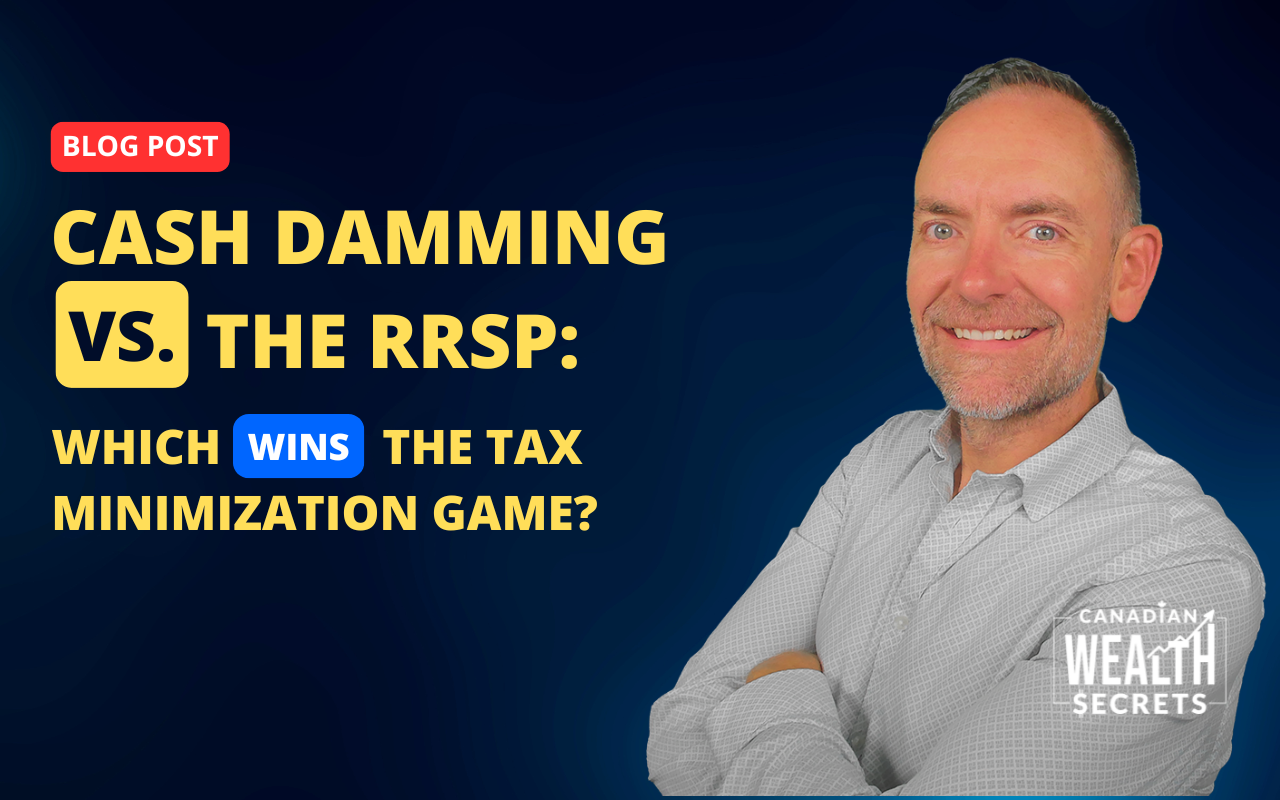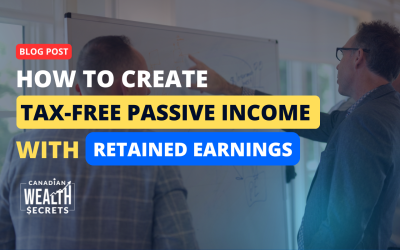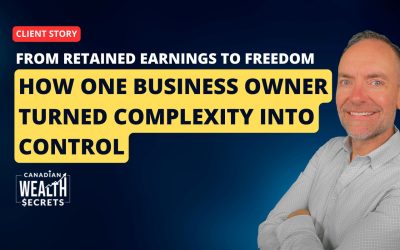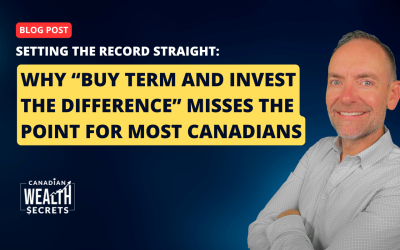“I thought I had the perfect strategy. Then I realized I might be leaving $13,000 on the table without even knowing it.”
That’s what Tim discovered when we sat down to walk through a tax optimization strategy using something called cash damming—a smart but sometimes misunderstood method for converting “bad debt” (your personal mortgage) into “good debt” (tax-deductible borrowing).
Tim is a T4-earning employee with a great job, a rental property, and a plan to scale up his investments. Like many Canadians who’ve started down the real estate path, he’s heard of the Smith Maneuver and cash damming strategies through Google and YouTube searches. He figured it might be the missing piece that would help him pay off his mortgage smarter and save on taxes.
And to his credit—it might be. But what surprised him (and might surprise you) is that it’s not the first or most valuable tax-saving move he could make.
Let’s break it down.
What Is Cash Damming?
If you’re new to the term, here’s the concept in a nutshell:
Cash damming is a strategy where you use the income from an investment property (e.g., rental rent payments) to pay down the mortgage on your primary residence and then reborrow that money using a re-advanceable line of credit to pay for your rental expenses.
This reborrowed money becomes an investment loan, and the interest becomes tax deductible.
So instead of paying non-deductible interest on your personal home, you start shifting the debt over time to an interest-deductible investment purpose.
Sounds brilliant, right?
It is—but only over time. And that’s the key most people miss.
Meet Tim: A Real-World Scenario
Tim and his wife both have strong T4 incomes—he earns $170,000 and she brings in another $110,000. They live in Toronto and currently own two properties:
- Primary residence:
- Worth: $1.3 million
- Mortgage: $920,000 (on a re-advanceable mortgage that grows a HELOC credit line)
- Rental condo:
- Worth: ~$650,000
- Mortgage: $378,000
- Owned 10% by Tim, 90% by his mom
Monthly rent from the condo is about $2,800 with $2,600 in expenses. The property is just above cash flow neutral—but still valuable from an equity-building and long-term growth standpoint.
Tim’s idea? Use the rent to pay down his personal mortgage and reborrow that amount each month to pay the rental’s expenses. Over time, this would slowly convert his personal mortgage into tax-deductible investment debt.
The Math That Matters
We looked at the real benefit in Year 1:
Let’s say Tim runs about $50,000 through the system this year using the strategy. At 5% interest on the reborrowed line of credit, that would generate about:
$2,500 in tax-deductible interest
That’s not nothing, but here’s the issue:
Hiring an investor-savvy accountant to ensure this is done properly might cost $1,500–$2,000/year.
So in the early years, the cash damming savings barely cover the accountant’s fee.
Does that mean it’s not worth doing?
Not at all.
It just means it’s a long-game strategy. If you’re thinking 5–10+ years out and plan to scale your investments, cash damming can turn into a very powerful wealth-building move.
The Bigger, Simpler Win for Tim Now: RRSPs
But here’s the twist.
When we got to talking about tax brackets and investment priorities, we uncovered something even more valuable for Tim—unused RRSP contribution room.
At a $170,000 salary, Tim is near the max RRSP threshold. His marginal tax rate is around 43–44%. That means for every dollar he contributes to his RRSP, he could be saving 44 cents in taxes.
He mentioned that his priority was always maxing his TFSA—and then contributing to RRSPs afterward if anything was left over.
But look at this side-by-side:
| Strategy | Contribution | Immediate Tax Savings | Net Investable Capital |
|---|---|---|---|
| TFSA only | $30,000 | $0 | $30,000 (after-tax) |
| RRSP first | $30,000 | ~$13,000 | $43,000 across RRSP + TFSA |
By contributing $30,000 to an RRSP, Tim could trigger a refund of about $13,000, which he could then also invest in his TFSA.
Instead of just having $30,000 growing tax-free, he now has $43,000 growing across two sheltered buckets: a tax free bucket (TFSA) and a tax deferred bucket (RRSP).
And the best part? No advanced tax strategy, no accountant fees, no CRA complexity.
This is the fastest, cleanest tax win available to many Canadians in high-income brackets who haven’t maxed out their RRSPs.
When to Use Each Strategy
Here’s the takeaway we shared with Tim—and the one we want to share with you:
Use RRSPs when:
- You’re in a high marginal tax bracket (40%+)
- You have significant unused contribution room
- You need an immediate, easy tax refund
- You want simplicity over complexity
Use Cash Damming when:
- You’re working with a professional accountant – ideally investor focused – who understands the CRA rules and compliance requirements around investment loans
- You have a re-advanceable mortgage or HELOC
- You already own rental/investment properties and/or a business in your personal name (not a corporation)
- You have consistent investment expenses (mortgage, repairs, taxes, etc.)
- You’re committed to using this strategy over a long time horizon
Bonus Tip: Accountants Aren’t Optional
If you’re thinking about implementing cash damming or any leveraged tax strategy, get the right accountant on your side and if you can, an accountant that focuses on investors and strategies such as Smith Maneuver and Cash Damming.
Based on our conversation, Tim is using an accountant whose specialty is basic T4 employee tax returns which doesn’t provide much help here. According to him, the accountants and CPAs he spoke with were unfamiliar with a strategy such as cash damming or that it isn’t compliant.
Unfortunately, this is a common story. Many generalist accountants only focus on basic T4 returns. But advanced tax strategies like this are more complex and have nuance. Therefore, when done correctly they are not illegal or non-compliant, but require careful recordkeeping and professional oversight.
That’s why investor-focused accountants are a must. Yes, they may cost more—but they can help you legally deduct thousands in interest over time, manage ownership structures, and even potentially help with minimizing capital gains tax in the future.
If you don’t know where to start, we can refer you to a few experienced professionals who understand real estate investors inside and out.
Where Tim Landed
Tim walked away from our meeting with clarity and a plan:
- Use his RRSP room now and every year he is in a high tax bracket to access a ~$13K refund annually
- Invest the refund into his TFSA to maximize sheltered growth
- Start building a relationship with a real estate-savvy accountant
- Use cash damming in a slow, disciplined way as he grows his property portfolio or grows an unincorporated business
- Evaluate long-term ownership structures for future tax efficiency
At just 37, with no kids yet and a spouse in her late 20s, Tim is in a fantastic position to build long-term wealth. The key is to use the right strategy at the right time—and not fall in love with a complex idea just because it’s flashy.
Final Thoughts: Are You Missing Your Easy Win?
If you’re like Tim and earning a strong income while investing in real estate, chances are you’ve heard of these advanced tax strategies—Smith Maneuver, cash damming, infinite banking.
They all work.
But they also take time, precision, and support.
Before you go all-in on a complex structure, make sure you’re not skipping the simple, high-impact wins—like using your RRSP room or correcting your ownership structure.
If you need help sorting out which tax-saving moves are best for your situation, book a strategy session with our team or browse more real-world stories on the Canadian Wealth Secrets Podcast.
Your wealth deserves a better strategy—and we’re here to help.
If you’re a Canadian investor or Canadian business owner looking to optimize your plan, take our short Wealth Building Phases Assessment and considering a free discovery call.
Or, if you’re incorporated and want advanced strategies to protect and grow your wealth, explore our free masterclass.
Disclaimer: This content is for educational purposes only and does not constitute financial, legal, accounting or investment advice. Always consult with a qualified advisor before making investment, tax or legal decisions.






